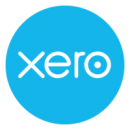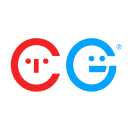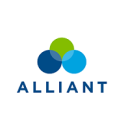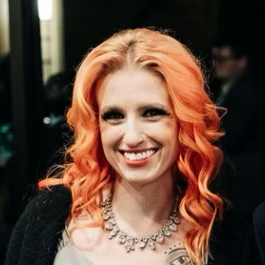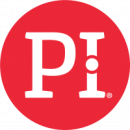When employees get to balance at-home work with in-office collaboration, they feel better — and work better, too.
At MVF, Head of Marketing and Commercial Strategy Bill Thorn and his peers have discovered this truth firsthand.
“From a business standpoint, we see this flexibility lead to greater productivity,” he said. “We have lofty goals and targets as a business, and each individual has a clear contribution to the overall success that we are driving toward.”
To put every employee in the best position to drive this success, the company only requires three days per week in the office and allows team members to decide which days of the week work best for them. And with access to quick communication via Slack, Thorn shared, it’s easy for employees to stay in touch, regardless of where they decide to work on a given day.
While the right tools and resources play a key role in upholding a flexible workplace, it’s also essential for companies to offer benefits that bolster work-life balance. According to Holly Gross, director of employer branding at CarGurus, the company’s employees get access to generous time-off policies and additional flex days, empowering them to decide how they wish to balance personal relaxation with work responsibilities.
“People are encouraged to choose the rhythm that helps them feel most satisfied, productive and prepared to think in innovative ways,” she said.
Read on to see what Thorn, Gross and representatives from six other companies had to say about how their employers foster flexibility and the impact this has on their people — and the businesses they uphold.
Featured Companies
Xero’s online accounting software supports small businesses with payroll, workforce management, expenses and more.
What does flexibility in the workplace look like for you? What practices/policies are in place that support it?
Xero’s flexible working policy gives us the best of all worlds and allows employees to balance their work and personal life and choose where, when and how they work, including the ability to collaborate in person or do focus work at home. Flexible/hybrid work helps us maintain inclusive and diverse practices respective of time zones, regions and cultures. To acknowledge the travel that our teams seek and life requires, Xeros can work from anywhere for up to 90 days.
We invest a lot in our office spaces, including ensuring they’re in desirable areas and boast communal spaces, meeting rooms, phone booths, micro-kitchens and desks equipped with monitors and cords to make dropping in or coming in regularly seamless. We have coordinators on site to help facilitate our “Boost Days,” during which “Xeros” get meals and social events to connect, which fosters attendance and connection for our teams globally. Our flexible work environment supports everyone, including our CEO and C-suite executives who you’ll see in the office or hosting all-hands from home, the road or conference rooms to suit their own needs.
“We have coordinators on site to help facilitate our ‘Boost Days,’ during which ‘Xeros’ get meals and social events to connect, which fosters attendance and connection for our teams globally.”
Why is flexibility an important element of Xero’s culture?
Park: I work with teams across time zones. I’m an early bird and am happy to meet with my U.K. team from home early in the morning. I can then take a break to have breakfast with my kids, exercise and make my way into the office a little later in the morning when traffic is quieter.
The Tools and Practices That Drive Xero’s Flexible Work Environment
- “Collaboration tools and cloud-based platforms: Asana, Slack, Google Suite, Miro and Confluence. Slack and Asana in particular enable async work. It’s pretty awesome to go to sleep and then wake up the next morning to see all that’s happened. We are able to use a ‘follow the sun’ model so that we can support others across regions, even when it is after hours.”
- “We have permission to ‘Xero-out’ of meetings that one isn’t adding to or gaining value from.”
- “We follow ‘Time-Well-Spent’ principles around effective meetings; meaning that without an agenda, people aren’t expected to attend.”
- “We foster transparency around information and documentation.”
HERE Technologies’ unified live map provides location data that helps automakers build reliable automated driving systems, improve electric vehicle battery consumption and more.
What does flexibility in the workplace look like for you? What practices/policies are in place that support it?
Flexibility means the ability to work from different offices or locations, allowing me to collaborate with a diverse set of colleagues and better understand various geographies. It also means having flexible working hours, which enables me to balance work with my mental and physical health while making time for socializing and spending time with family.
Our company supports this by providing relevant equipment to enable smooth remote/hybrid work. Additionally, the company offers an extra 20 work-from-home days every calendar year, and we receive a remote working allowance as part of our compensation, further promoting a flexible and supportive work environment.
Why is flexibility an important element of HERE Technologies’ culture?
Flexibility is crucial to our company’s culture because it recognizes that employees have unique needs and responsibilities outside of work. By trusting employees to manage their time and work environment, the company fosters a sense of ownership, well-being and loyalty.
“By trusting employees to manage their time and work environment, the company fosters a sense of ownership, well-being and loyalty.”
A personal example: During a particularly busy period in my personal life, having the option to shift my working hours allowed me to take care of a family member without compromising my professional responsibilities. I was able to attend necessary appointments during the day and manage my work in the evenings without any stress or fear of falling behind. This experience deeply reinforced how much I value working at a company that treats employees like humans first, not just workers.
What tools or meeting structures ensure that a flexible work setup works for everyone? Is there certain software you swear by, or informal happy hours that you love?
To make flexibility work for everyone, clear communication and the right tools are essential. We rely heavily on collaboration tools like Webex for instant communication, and Confluence, Jira and other platforms for project management and documentation, ensuring that everyone is aligned, no matter where they are working from. Regular stand-up meetings and agile methodologies help keep teams connected and focused while also giving room for asynchronous updates when needed.
On the lighter side, we enjoy a year-end vacation and team events sponsored by the company. These interactions play a huge role in maintaining a strong team culture, even when we are geographically dispersed.
CarGurus operates an online automotive marketplace connecting buyers and sellers of new and used cars in the United States, Canada and the United Kingdom.
What does flexibility in the workplace look like for you? What practices/policies are in place that support it?
At CarGurus, most employees are expected to be on site 60 percent of the time — but how you structure that time is up to you and your team. Some people stick to the same three days each week, while others adjust their schedules based on personal commitments or the type of work on their plates. This flexibility, combined with helpful tracking tools, generous time-off policies and additional flex days that let me easily pivot when life happens, helps me make the most of my time both in and out of the office.
Why is flexibility an important element of CarGurus’ culture?
Our culture is built to empower employees to do their best work, and our flexible model reflects this. People are encouraged to choose the rhythm that helps them feel most satisfied, productive and prepared to think in innovative ways. This approach is also embodied in our Boston headquarters, which opened in September 2024 and was purpose-built for hybrid work. “Guru HQ” features more than 900 plug-and-play seating options and over 100 tech-enabled collaboration spaces — all designed to help you seamlessly connect, whether you’re on site or remote. I drafted this from one of our two libraries — quiet, sunlit spaces that are perfect for focused work — and submitted it to Built In the next day from my desk at home while my dog snoozed by my side.
“‘Guru HQ’ features more than 900 plug-and-play seating options and over 100 tech-enabled collaboration spaces — all designed to help you seamlessly connect, whether you’re on site or remote.”
What tools or meeting structures ensure that a flexible work setup works for everyone? Is there certain software you swear by, or informal happy hours that you love?
Our hybrid model is supported by thoughtful perks that remove common friction points associated with coming into the office. These include desk reservation and lunch-ordering apps, a $15 lunch stipend with delivery and a best-in-class commuting benefit that covers most, if not all, transportation and parking costs. Amenities like an on-site gym and barista bar, two roof decks, wellness rooms and an impressive selection of snack and drink options make our HQ especially inviting and energizing. Meanwhile, technology helps employees in Dublin, Raleigh, North Carolina, Dallas and beyond collaborate with Boston-based teammates and engage with company events, ERGs and career development opportunities. I truly believe that working in an environment that prioritizes flexibility, community and personal choice has brought out my best.
Coupa Software’s AI-powered platform is designed to harness spend data from global buyers and suppliers, making it easier for organizations to change how they manage direct and indirect spend.
What does flexibility in the workplace look like for you? What practices/policies are in place that support it?
It means being able to take time during the workday to do things that need to be done during business hours, like taking pets to the vet and visiting the doctor. This is really critical for global organizations because I may need to join an early call with team members in Europe or a late call with those on the West Coast. Because I have flexibility, I can set my schedule to accomplish the work I need to get done.
“It means being able to take time during the workday to do things that need to be done during business hours, like taking pets to the vet and visiting the doctor.”
Why is flexibility an important element of Coupa Software’s culture?
Being a global company, we must enable people to work across various time zones. And Coupa’s culture is such that I don’t have to work 15-hour days to do that.
What tools or meeting structures ensure that a flexible work setup works for everyone? Is there certain software you swear by, or informal happy hours that you love?
Zoom is critical, since everyone can be on a call simultaneously and turn on their cameras if desired. Being able to work asynchronously with shared documents is also incredibly important. These tools are pretty ubiquitous now, so we take them for granted.
Alliant Credit Union is a digital credit union that enables consumers to bank, borrow and invest.
What does flexibility in the workplace look like for you? What practices/policies are in place that support it?
Workplace flexibility is a cornerstone of our culture at Alliant, ensuring employees feel valued, supported and empowered to do their best work. We offer a hybrid work model that fosters both productivity and collaboration. In-office days encourage team bonding and spontaneous idea-sharing, while remote work allows for deep focus time and minimizes commuting stress. Additionally, we prioritize employee well-being by offering paid time off for vacations, personal time or simply recharging. Our paid sick leave ensures employees can take time away for themselves or their family members when needed, whether they’re recovering from an illness or proactively caring for their health. By embracing flexibility, we create an environment where our employees can thrive both professionally and personally.
Why is flexibility an important element of Alliant Credit Union’s culture?
Workplace flexibility is essential in fostering a culture of trust, autonomy and overall well-being. It empowers employees to balance their professional and personal lives, leading to higher job satisfaction and productivity. As a parent of two active boys, I appreciate the ability to adjust my schedule and attend school events without worrying about work obligations. When one of them needs care, whether that’s due to an injury or an illness, having paid sick days and remote work options ensures I can prioritize their well-being while also maintaining my responsibilities. These policies not only reduce stress but also allow for rest, recovery and proactive self-care, all without financial strain. By embracing flexibility, we create a workplace where employees feel valued, supported and empowered to do their best work — without sacrificing the moments that matter most in their personal lives.
What tools or meeting structures ensure that a flexible work setup works for everyone? Is there certain software you swear by, or informal happy hours that you love?
At Alliant, Microsoft Teams is essential in keeping everyone connected, productive and engaged. By leveraging its powerful features, we make flexible work more intuitive, structured and collaborative. Microsoft Teams seamlessly integrates with Planner, helping us keep projects organized and on track. Dedicated channels ensure discussions remain focused, while threaded chats and recorded meetings allow team members to participate at their own pace, minimizing disruptions and maximizing efficiency. Beyond work, Microsoft Teams fosters a sense of community. Informal updates, polls and GIF reactions keep communication engaging and fun, strengthening team connections in a digital workspace. With Microsoft Teams, flexibility isn’t just an idea — it’s a reality that keeps our teams aligned and thriving.
Bestow’s software helps organizations to streamline their life insurance and annuities businesses, enabling them to create digital-first customer experiences, build and test new products and more.
What does flexibility in the workplace look like for you? What practices/policies are in place that support it?
Bestow and my managers recognize and appreciate that employees are human beings who have lives, obligations and other people they may be responsible for outside of work. I never have to feel like I’m being forced to choose between my job and caring for my family. Bestow supports this by being a remote-first company, offering flexible PTO and promoting a company culture that values balance and work-life boundaries. We are encouraged to work at a sustainable pace and care for ourselves mentally and physically to avoid burnout. We all have equity in the company, so we’ve all got skin in the game, and it creates a culture where we recognize we’re in this together. It creates a more collaborative, supportive and just plain friendly environment.
Why is flexibility an important element of Bestow’s culture?
I have three kids and a disabled husband for whom I’m the sole provider, and having the flexibility to be able to pick a sick kid up from school, drive their dad to the doctor or respond to an unexpected crisis without ever feeling like I’m jeopardizing my job or career progress is a priceless benefit. Our leaders publicly model this behavior in their own lives. I’ve always felt compassionate support and genuine empathy from my managers and teammates.
“I’ve always felt compassionate support and genuine empathy from my managers and teammates.”
What tools or meeting structures ensure that a flexible work setup works for everyone? Is there certain software you swear by, or informal happy hours that you love?
Bestow has strong communication systems in place. Utilizing Slack for asking questions, ad-hoc huddles, posting updates and sharing current availability status is extremely useful. Meetings are often recorded for those unable to attend in real time, and productivity is seen as a measure of work completed rather than the specific hours people are sitting at their desks, allowing contributions to be asynchronous when life gets complicated. Periodic on-site gatherings are a valuable mechanism for building rapport and relationships within and across teams both during the workday as well as during after-hours dinners and social activities.
MVF is an integrated media and marketing company that specializes in services related to lead generation, advertising and market insights.
What does flexibility in the workplace look like for you? What practices/policies are in place that support it?
Flexibility in the workplace is a non-negotiable for modern business operations. We are well aware that people have life outside of work, such as dependents, life administration and hobbies and passions to enjoy, so flexibility is a requirement. From a business standpoint, we see this flexibility lead to greater productivity. We have lofty goals and targets as a business, and each individual has a clear contribution to the overall success that we are driving toward. We have trust in the people we work with to have the attitude to drive their own portfolio performance and understand what is needed to be successful in doing so!
We do employ a three-days-per-week policy at our centrally located Austin office, but how that is accrued is in the hands of each individual. In practice, this is not a policy that we have to police. Working in a successful company within the industry we operate in means working quickly and being agile, and oftentimes, popping your head over a monitor for a quick chat is the most effective way of getting things done. Our office is also full of a great bunch of humans, so the combination sees so many people actively wanting to come in more than the three days that are required.
Why is flexibility an important element of MVF’s culture?
We have an award-winning culture that starts from the moment of hiring. Reed Hastings, the CEO at Netflix, coined the phrase, “We don’t hire brilliant jerks” — a quote that has been drummed into all MVF leaders’ consciousness through rigorous management training. We hire great people; we should be trying to get the best version of them, and flexible working is a tool that supports that.
“We hire great people; we should be trying to get the best version of them, and flexible working is a tool that supports that.”
For example, according to the INRIX Global Traffic Scorecard, the average Austinite lost two days a year while commuting in 2024, which has increased year over year since 2021. Two days of your life per year gone but not forgotten to the I-35 or MoPac is enough to turn the best of people into jerks. As a result, most of the people in our office choose to work from 8-4 P.M. to avoid the peak travel time, which also comes with the added benefits of longer sunny evenings as well as increased overlap with our U.K. office. It is a no brainer. We don’t hire jerks, and we should do all we can to avoid creating them!
What tools or meeting structures ensure that a flexible work setup works for everyone? Is there certain software you swear by, or informal happy hours that you love?
Slack is the obvious tool which, when used well, creates all sorts of flexibility, and MVF’s usage is a chef’s kiss. Firstly, we run a narrow set of clear focused channels to post any content that requires any element of audit trail and/or eyes from stakeholders not engaged actively in the discussion. These posts have a hashtag followed by a three-letter acronym to denote what product or products the content is in relation to for easy recall. If there are call-to-actions on any of the content or just a need to show that a message has been received, there are dedicated emojis for each team to add to the posts to show that they have seen it.
There is also a level of — jovial — self-policing on Slack usage with certain emojis: “mega-thread-alert” to denote too much back and forth, signaling that a meeting might be more efficient; “slack-police” if the post is not in the right place or in a useful format; and the dreaded “pickle” emoji if you have had to delete the post content. Whether this is posted at 2 p.m. off the back of an in-office chat or at 9:30 A.M. during isolated deep work at home, it supports both. Celebrating successes of individuals and teams is also supported through Slack, with every achievement made more visible.
The Predictive Index’s HR software is designed to support hiring, developing and retaining talent, enabling teams to identify the best candidates, send out engagement surveys and more.
What does flexibility in the workplace look like for you? What practices/policies are in place that support it?
Flexibility shows up at The Predictive Index in several important ways. When I think of all the jobs I’ve had over the years, PI stands out specifically for the emphasis we have on maintaining a flexible and accommodating environment. First and foremost is our hybrid work policy, which allows for employees to work from home and/or our central office as much as they see fit. There are some employees who spend a significant portion of their time at HQ as we call it, but the vast majority enjoy the opportunity to work remotely and remain productive while having additional flexibility to operate on their terms.
This ability to work from home dovetails especially well with our unlimited PTO policy that we encourage our organization to take full advantage of. We truly want everyone at PI to not only have time for vacation and personal endeavors but also have the flexibility to take a mental health day when the need arises or block off an afternoon for an important event/appointment. The expectation is always that our employees use these policies to suit their own needs, which can be different from someone else’s. That’s what flexibility is all about!
Why is flexibility an important element of The Predictive Index’s culture?
To me, flexibility in the workplace is critical for building a culture of respect. Because I know that I can take time off when I need it or work from home instead of the office, I’m confident that I have the trust of my team to get my responsibilities done effectively and efficiently. Beyond that, the understanding and acceptance of each employee’s personal circumstances shows a great empathy that goes a long way in upholding a strong culture. Letting workers be people first means they’re more likely to come to work energized and ready to contribute because they aren’t burning the candle at both ends. And if the work environment is supportive and respectful, people go home happier, too!
“Letting workers be people first means they’re more likely to come to work energized and ready to contribute because they aren’t burning the candle at both ends.”
For me, as a new parent, the flexibility afforded by The Predictive Index in terms of schedule, work location and time off has meant I can be present and enjoy watching my daughter grow up without worrying about what it means for my professional career. I get the best of both worlds, which is all I could ask for!
What tools or meeting structures ensure that a flexible work setup works for everyone? Is there certain software you swear by, or informal happy hours that you love?
Like so many others, The Predictive Index lives on Slack and Zoom for communication. We certainly wouldn’t be able to work without them, and each has a suite of features that support a flexible work environment. Video calls and hybrid meetings dominate our agenda, so being able to rely on technology is key. Of course, our own software is also impactful when it comes to coordinating tasks, project plans and team input asynchronously. We support each other and our different workstyle preferences by gaining a deeper understanding of peers through our behavioral assessment. Identifying and respecting those similarities and differences makes a massive difference in how we work together.




